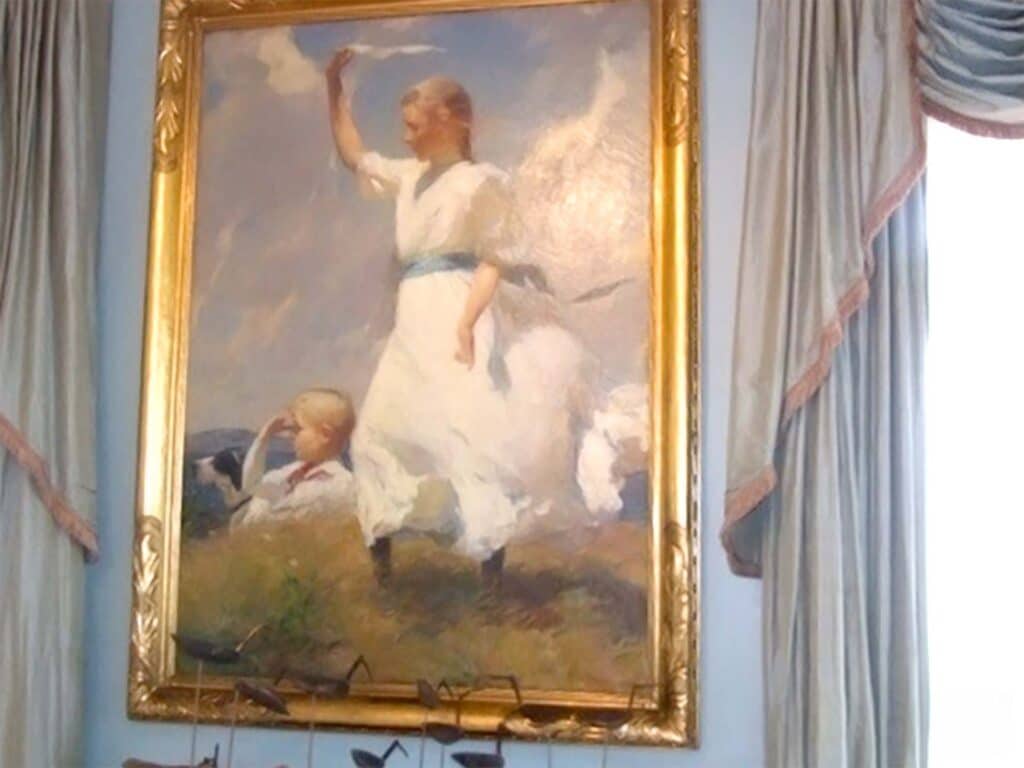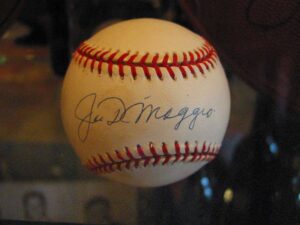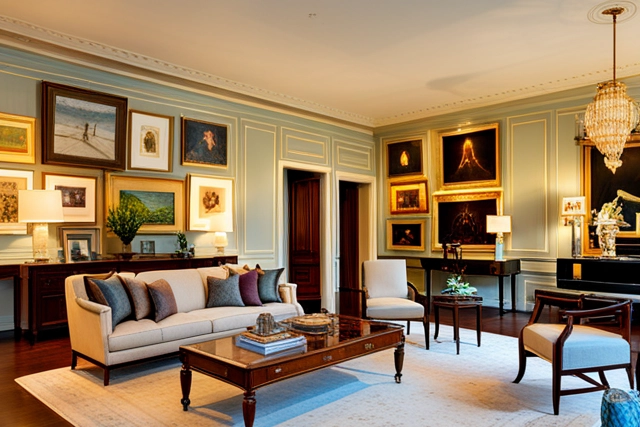Gilt framed oil on canvas entitled Hilltop signed and dated lower right by the artist Frank Weston Benson (American, 1862 – 1951) 1903 69×49
Replacement Value: $6,525,000
Born in Salem, Massachusetts, Frank Benson was a painter of impressionist seascapes and landscapes, often with figures posed by his wife and children, and also numerous hunting scenes. He spent most of his life in the seaport town of Salem and loved trekking through the countryside for his subject matter, especially wildlife. He is credited with making the American sporting print a distinct art form and for being one of the outstanding 20th-century wildlife printmakers.
He was a teacher in Portland, Maine at The Society of Art, and in Boston at The Museum of Fine Arts, where he and his good friend Edmund Tarbell established it as a top-notch institution.
He studied art in Boston at the Museum School of Fine Arts, and in 1883 in Paris with Gustave Boulanger and Jules Lefebvre at the Academie Julian* during the French Impressionism movement. By the early 1900s, he had a very successful career and was a member of the Ten American Painters*, a prestigious group of early impressionists.
He was a life-long hunter, and it was said that he knew birds as only a sportsman can. He worked in both etching* and drypoin* and was lauded for his clear design, the naturalness of his birds and hunters, and the mastery of etching techniques.
In 1900, Benson discovered the pleasures of North Haven Island off the coast of Maine, and from that time, he and his family spent every there, even purchasing a farm where he had a studio. There his style became increasingly impressionistic.
Midway through his career as a recognized oil painter, he began to paint with watercolors, perhaps inspired by Winslow Homer’s use of that medium to show hunting scenes in the Adirondacks. In 1921, Benson became a serious watercolorist while on a fishing expedition to the Gaspe Peninsula of Quebec, and from that time until his death in 1951, he created nearly six-hundred watercolors. He also did an occasional still life with Oriental themes such as Confucius circa 1930.








